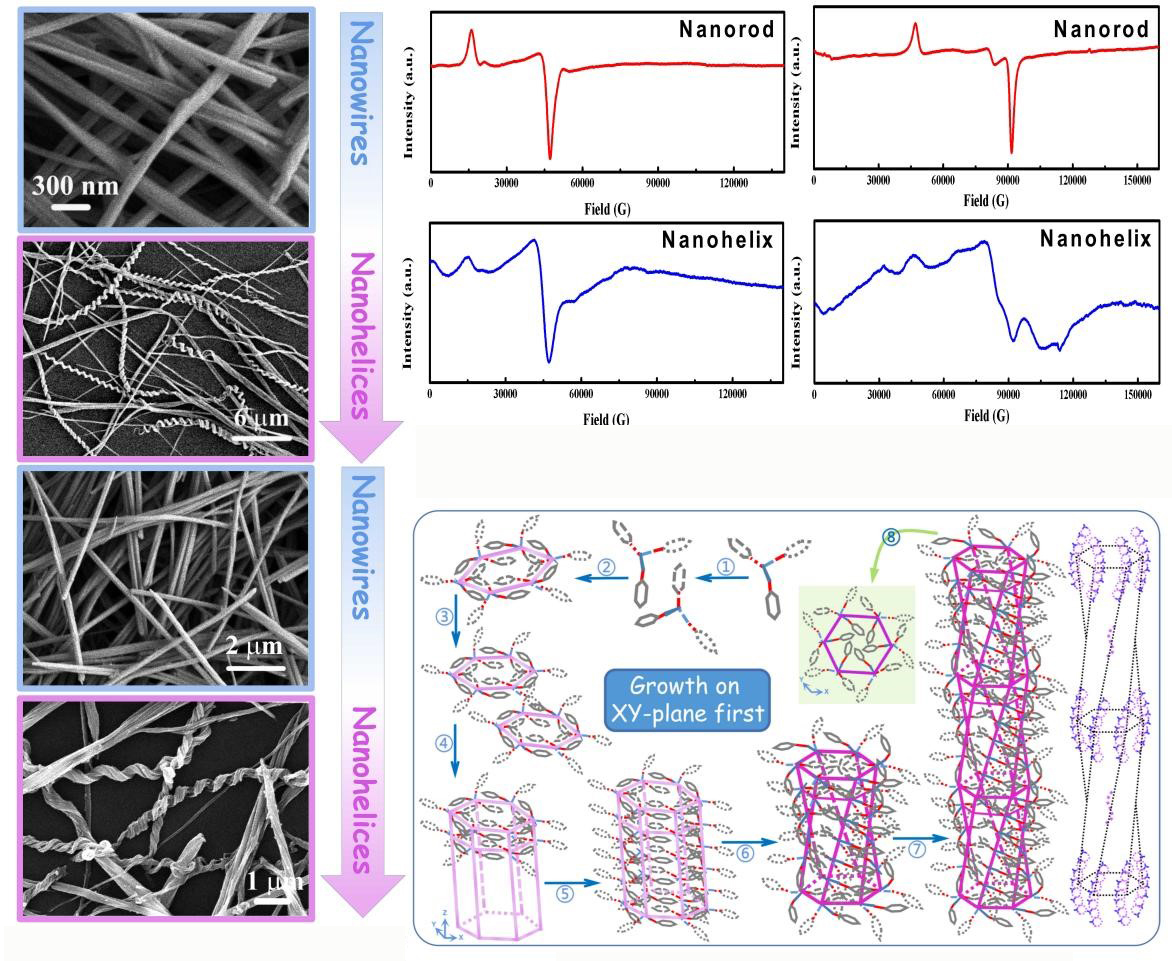
Reversible nanohelix transformation is one of the most exquisite and important phenomena in nature. Nanomaterials rarely form helical crystals. Due to the irreversibility of the previously studied twisting forces, untwisting is harder than retwisting crystalline nanohelices. Thus, many reversible twisting transformations between two stable crystalline products are exceedingly rare and need a sensitive energy balance. This reversible transformation of nanohelices has long been considered difficult to achieve.
Professor LU Qingyi and Professor GAO Feng’s research group at Nanjing University, in collaboration with the Hefei Institutes of Physical Science (HFIPS), Chinese Academy of Sciences (CAS), and the University of Science and Technology of China, has recently discovered a subtle competition and cooperation relationship within the crystal structure, establishing a delicate energy balance between the structures of the twisted and untwisted crystalline nanohelices.
The research findings have recently been published in Nature Communications.
This research has achieved, for the first time, multiple reversible transformations between nanowires and nanohelices.
Electron spin resonance (ESR), including high-field ESR, in the Steady-State High Magnetic Field Experimental Facility (SHMFF), HFIPS has demonstrated changes in the coordination environment of Co(II) and a decrease in symmetry of the nanohelix. Solid-state nuclear magnetic resonance spectroscopy and terahertz spectroscopy have indicated that π-π interactions play a crucial role in helical growth. These results, combining with theoretical calculations and various validation experiments, indicate that the twisting arises from the competitive interaction between condensation reactions and π-π stacking processes. This unique competitive growth mechanism, along with the micro-adjustability of the growth mode, is the key to construct finely adjustable energy balance systems and achieve reversible helical transformations.
By selectively designing and altering intermolecular forces and finely controlling the growth rates in different directions while maintaining the overall structure, the direction of energy balance can be changed, successfully realizing the twisting, untwisting, and retwisting of nanohelices.
This research presents a new approach for designing reversible crystal transformations through fine-tuning intermolecular interactions to enable multiple reversible transformations in crystals. This technique offers a new perspective for crystallography, enhances crystallographic theory, and enables the realization of various complex reversible processes.
This research was supported by funding from the National Natural Science Foundation of China and the National Key R&D Program.

Fig. 1 Scanning electron microscopy images of the nanowires and nanohelices; Fig. 2 electron paramagnetic resonance spectra of the nanorods and nanohelices; Fig. 3 Theoretical calculations and growth mechanisms of nanohelices. (Image by WANG Jihao)